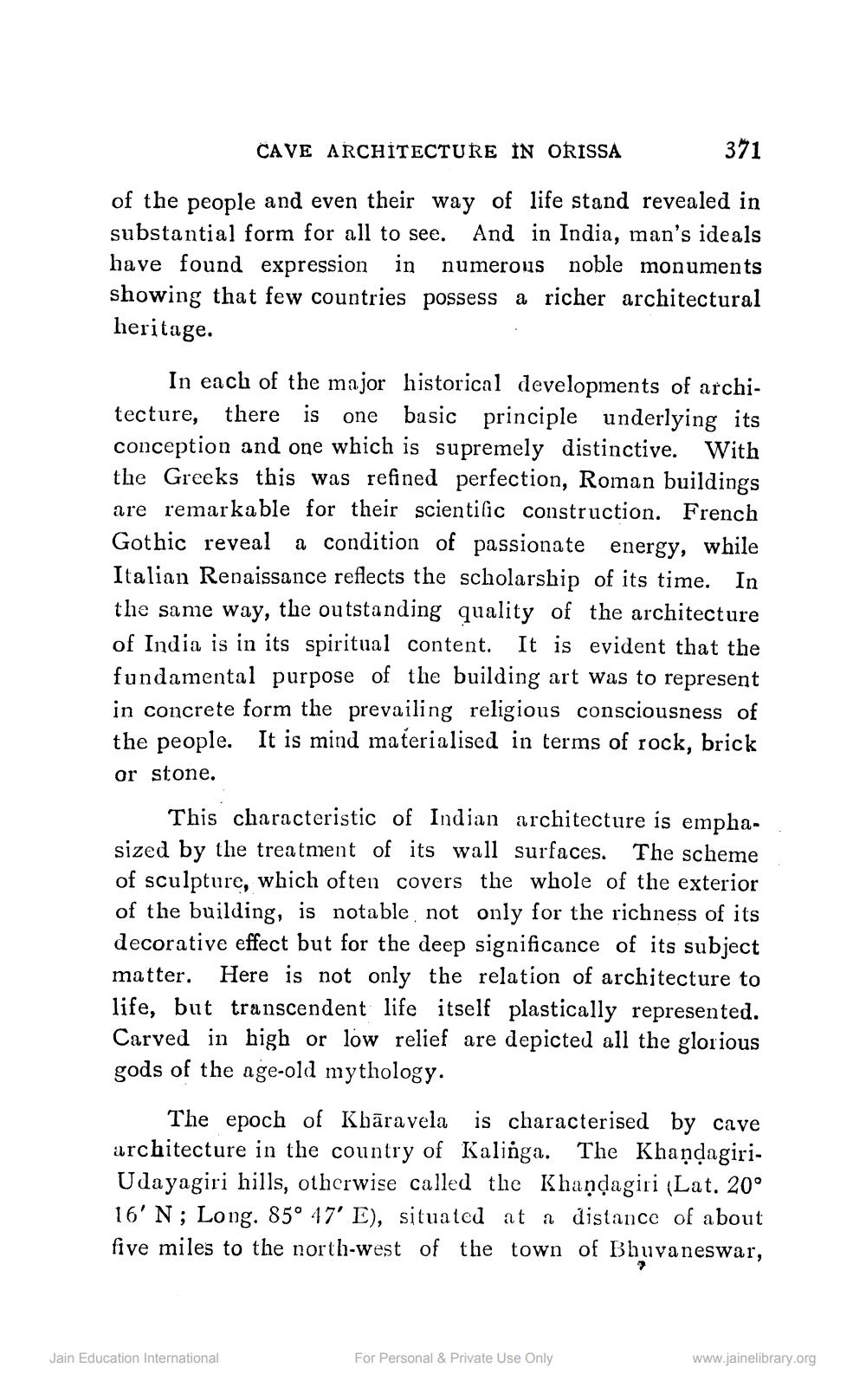________________
CAVE ARCHITECTURE IN ORISSA
371 of the people and even their way of life stand revealed in substantial form for all to see. And in India, man's ideals have found expression in numerous noble monuments showing that few countries possess a richer architectural heritage.
In each of the major historical developments of architecture, there is one basic principle underlying its conception and one which is supremely distinctive. With the Greeks this was refined perfection, Roman buildings are remarkable for their scientific construction. French Gothic reveal a condition of passionate energy, while Italian Renaissance reflects the scholarship of its time. In the same way, the outstanding quality of the architecture of India is in its spiritual content. It is evident that the fundamental purpose of the building art was to represent in concrete form the prevailing religious consciousness of the people. It is mind materialised in terms of rock, brick or stone.
This characteristic of Indian architecture is emphasized by the treatment of its wall surfaces. The scheme of sculpture, which often covers the whole of the exterior of the building, is notable not only for the richness of its decorative effect but for the deep significance of its subject matter. Here is not only the relation of architecture to life, but transcendent life itself plastically represented. Carved in high or low relief are depicted all the glorious gods of the age-old mythology.
The epoch of Kbāravela is characterised by cave architecture in the country of Kalinga. The KhaņdagiriUdayagiri hills, otherwise called the Khaņdagiri (Lat. 20° 16' N; Long. 85° 47' E), situated at a distance of about five miles to the north-west of the town of Bhuvaneswar,
Jain Education International
For Personal & Private Use Only
www.jainelibrary.org




